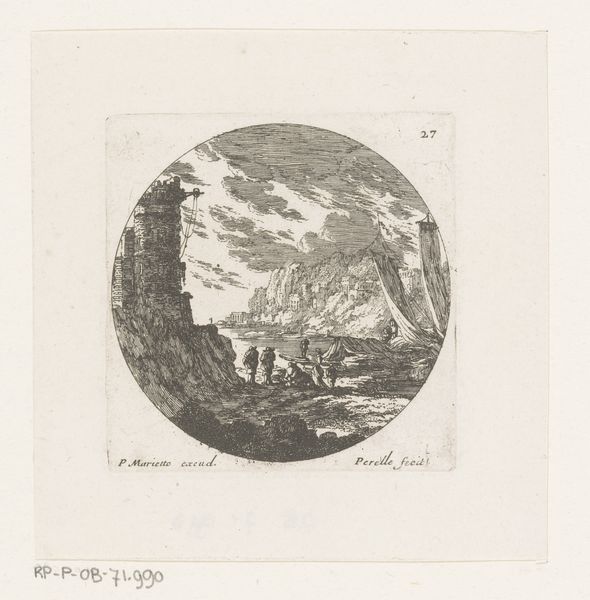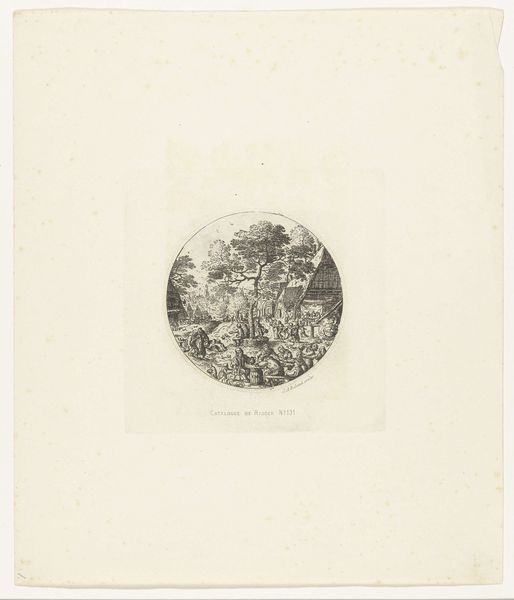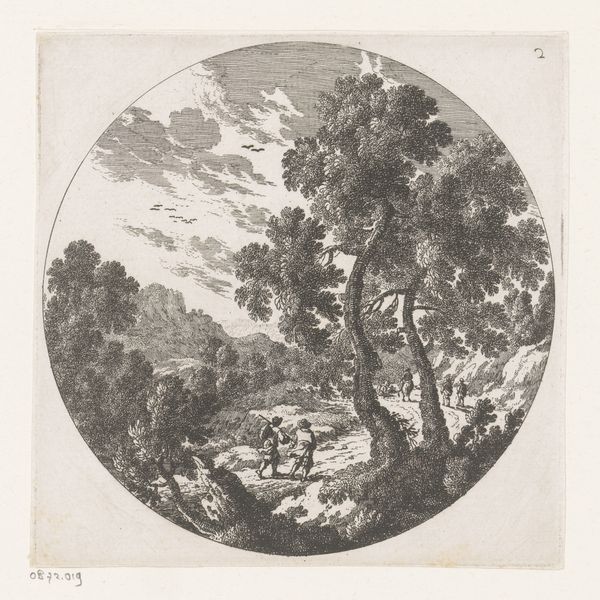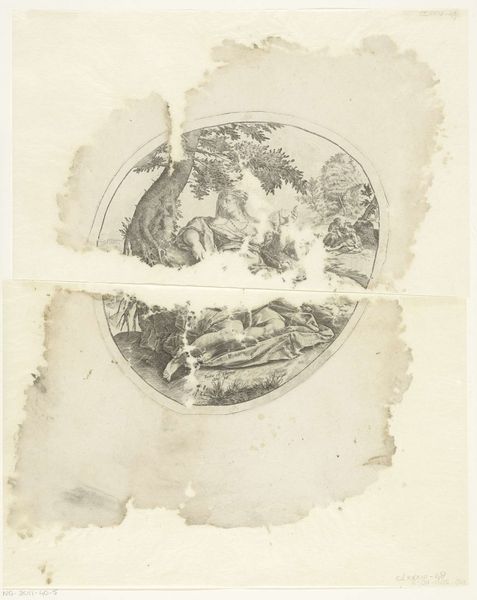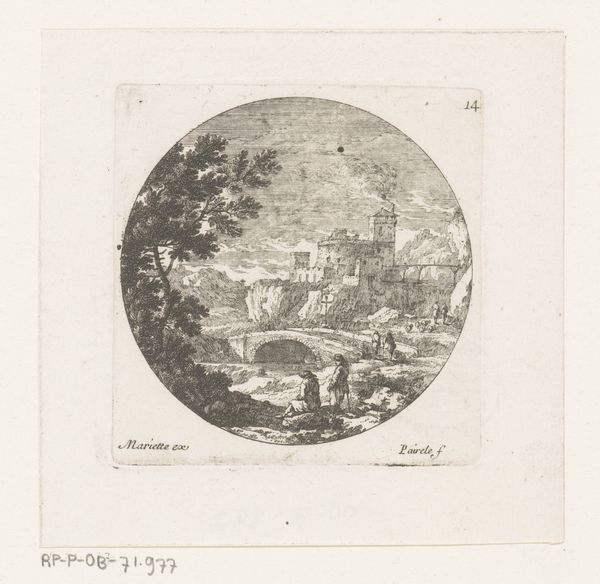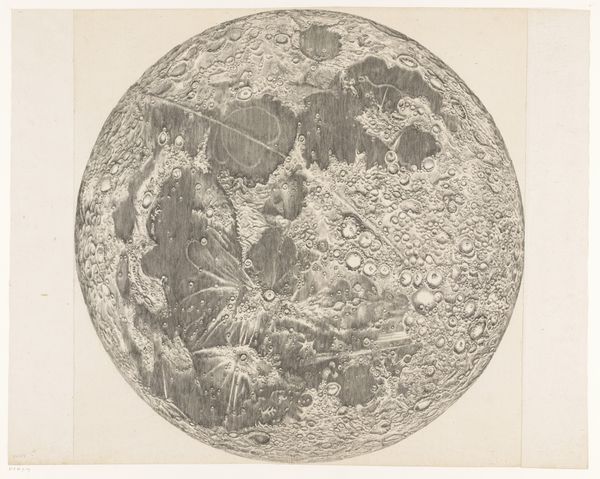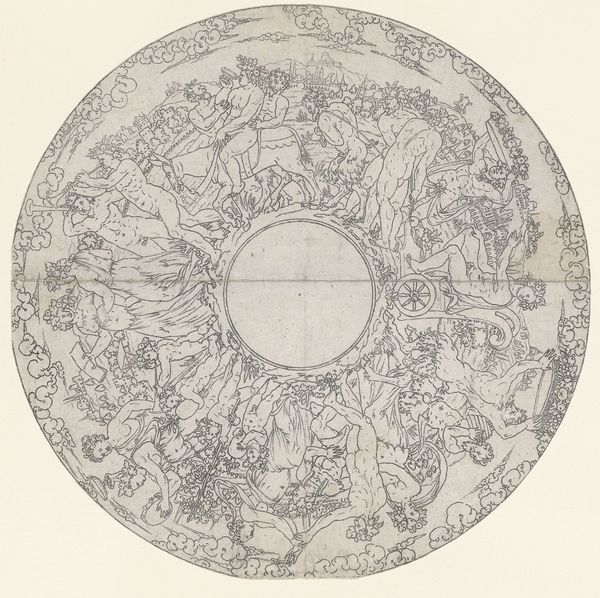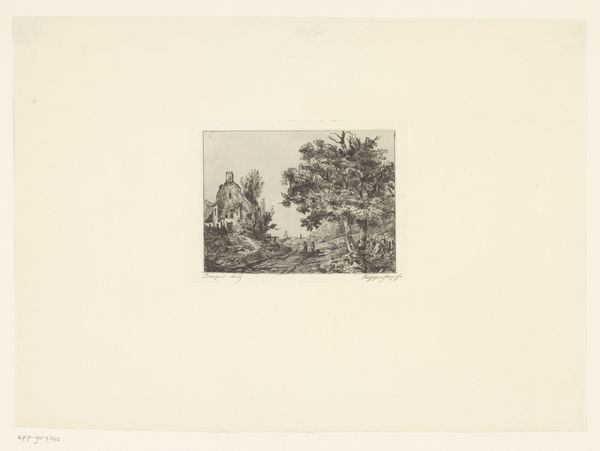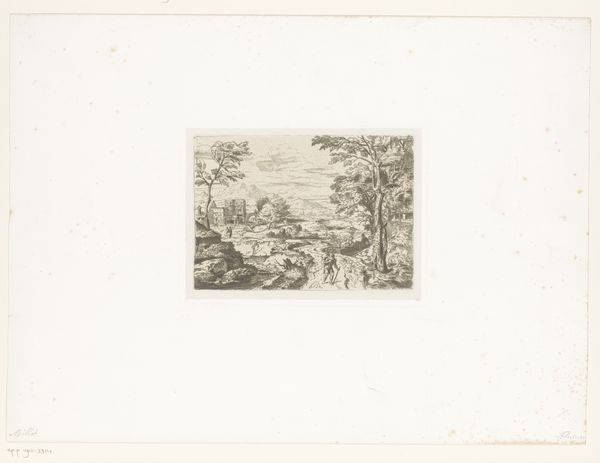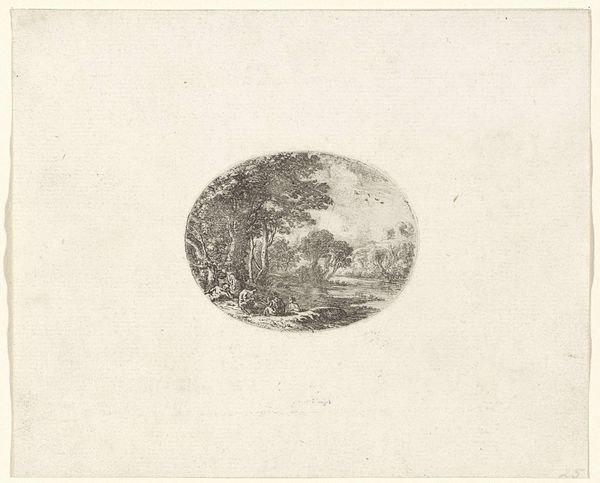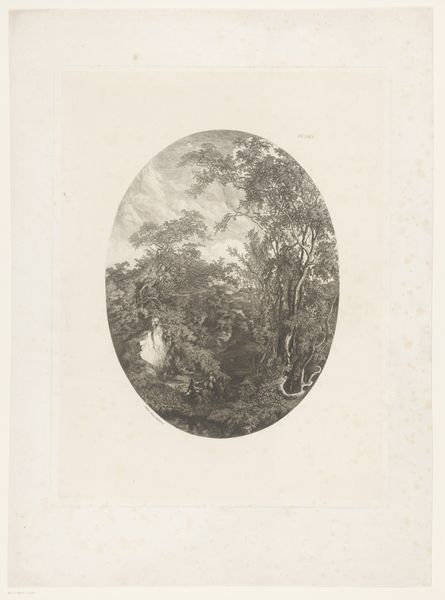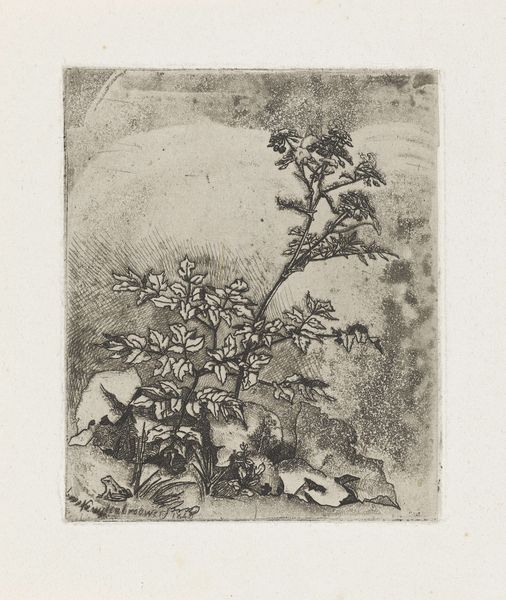
drawing, etching
#
drawing
#
etching
#
old engraving style
#
landscape
#
personal sketchbook
#
forest
#
romanticism
#
sketchbook drawing
Dimensions: height 82 mm, width 81 mm
Copyright: Rijks Museum: Open Domain
Editor: Here we have Adriaan Jacob Willem van Dielen's "Forest Landscape in a Round Frame," an etching and drawing from between 1782 and 1812. The intricacy within the circular boundary is striking. How do you approach interpreting a piece like this? Curator: The initial visual element that captures my attention is the insistent geometry of the circle. It immediately creates a dialogue with the ostensibly naturalistic scene it encloses. What semiotic relationships emerge from this interplay? Editor: That's fascinating. I hadn't thought about the circle as a contrast. I was more focused on the detailed lines creating depth. Curator: Precisely. Note the contrast between the contained and the implied infinity of the landscape. How do those linear elements, those strokes and hatch marks, construct space within this bounded field? Do they mimic the style of Romanticism? How do you feel they either break with that pictorial tradition, or adhere to it? Editor: I see your point. It’s Romantic in its subject matter—the beauty of nature—but the geometric shape feels very different. Perhaps the circle is a way of framing nature as something to be studied or possessed, not just admired? Curator: An astute observation. Consider, also, the materiality of the print itself—the texture of the paper, the way the ink sits upon it. These are not merely representational; they are intrinsic to the work's meaning. Editor: So, the work isn't just about the forest; it's about how the artist chooses to present and contain it. The round frame contains the vision and guides how the image is consumed. I'll remember that for other works! Curator: Precisely. Form is never simply a vessel; it is an active participant in the construction of meaning.
Comments
No comments
Be the first to comment and join the conversation on the ultimate creative platform.
